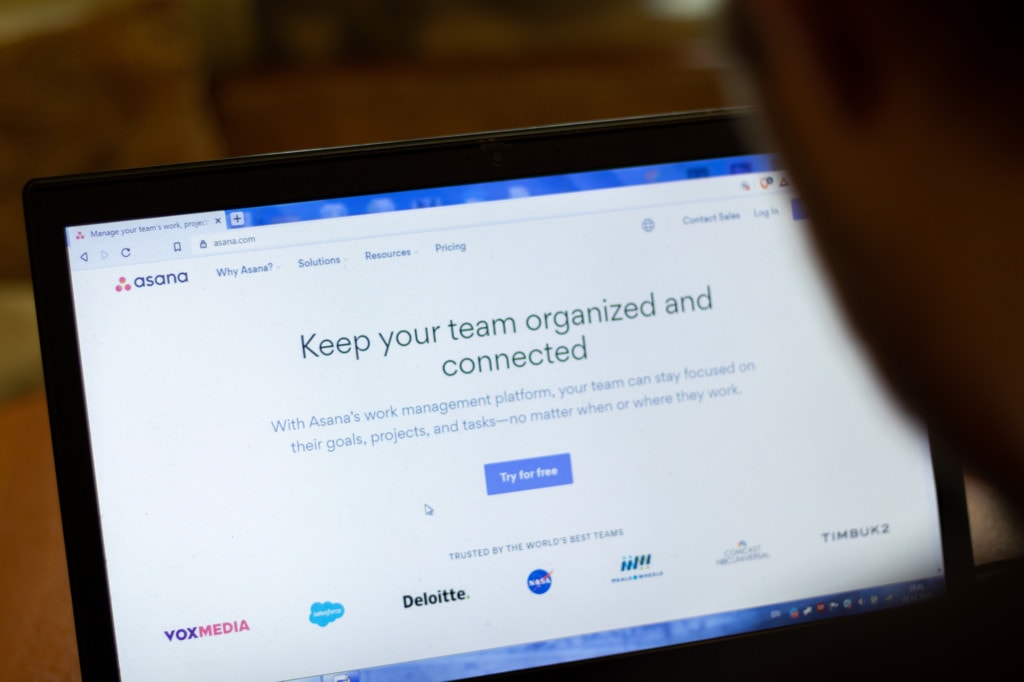2020’s been a wild ride so far. To make it even more interesting, maybe now you’re also managing a team of remote employees.
There’s a learning curve. These tips can help.
The shift towards remote work has been happening for years. But the COVID-19 pandemic of 2020 pushed the fast-forward button. Working from home used to be a nice idea or an enviable job perk. Practically overnight, it became the only way to work. “Essential” employees, at least in many states, are the only ones commuting to work. For everyone else, the old commute just shrank to a matter of steps.
It’s a big enough challenge for employees to go from cubicle to couch. But what about managers? No managerial program out there prepares you for how to manage a team of remote employees you only ever see on-screen.
According to The State of Remote Work Report from OWL Labs, some of the top concerns of remote team managers include:
- Reduced team cohesiveness
- Lagging employee focus
- Reduced employee productivity
- Overworked employees
- Maintaining company culture
Reading through that short list, you may be thinking, “Actually, these are some challenges we faced even before our team went remote!” If so, this video may be a huge help. Here, we’ve got a bit of training with Capitalism.com’s Chief of Staff, Ines Manziano. She knows a thing or two about managing a team, whether it’s in-person, remote, or in our case, a combination of both.
So, how can you manage remote employees without losing your mind or your business? It is possible to maintain your sanity and keep your business thriving with a remote workforce.
How Do You Manage Remote Employees?
In some ways, managing a remote team is the same as managing one you see face-to-face every day. Many of the same principles apply. But the tactics are different.
If your employees were working remotely long before anyone had ever heard of COVID-19, you may barely notice a difference. But if you’ve got a team that’s never been remote - or one where only a few members worked from home - you’ve got a bit of a learning curve to tackle. If that sounds daunting, take heart. Once you learn how to manage your remote team, you may wonder why you ever paid for office space in the first place.
Without further ado, here are some tips to help you wrangle cats, er, manage a remote team.
Tip #1: Clear Expectations Get Met
As nice as it would be to have a team that can read your mind, that’s not a thing (yet). The only outcome worse than failing to meet your objectives for the quarter or year would be to find out nobody even understood them from the start.
You should be able to wake an employee from a dead sleep and have them communicate the team’s goals for the month, quarter, and year clearly. (But yeah, maybe don’t actually do that.) The point is, your team will be more effective if they’re all rowing the boat in the same direction.
At Capitalism.com, we have quarterly meetings with the whole team. By the end of these meetings, every team member knows exactly where we are headed that quarter. From there, we create a quarterly timeline. That timeline helps us set monthly goals. Those goals show up in each week’s priorities. This way, it’s easy to know whether we are on track, what help we need, and whether our strategies need tweaking to reach those goals.
By setting crystal clear expectations, we avoid the vague anxiety that arises from uncertainty. We all know what we’re doing, how we’ll do it, and how to recognize when we win.

How Do I Know If My Remote Employee Is Working?
Are your remote employees really working? Or are you paying them to take a deep dive into their favorite subreddit? A primary concern employers with a remote workforce have is that employees will be spending time on non-work-related tasks during the workday, which will decrease productivity.
Some employers micromanage remote teams or have too many virtual meetings to ensure employees remain on-task. Research shows that's not necessary or effective. A Stanford University study revealed that employees who transitioned to working from home saw a 22 percent increase in their work performance and productivity compared to working in the office.
The truth is, your employees are the same people, whether they're home or in the office. If they were self-directed and productive in the office, they'd likely show up the same way working from home. Avoid micromanaging them. All that does is frustrate team members who are already doing their best under stressful circumstances.
Tip #2: Don’t Just Text, Talk Too
While nobody likes sitting through meetings, you will likely need to be more intentional about communicating with your team now. It’s not like anyone’s knocking on your door or popping their head into your cubicle to get clarification. It’s more likely that you’re using Slack, Basecamp, or some other communications tool more than ever before. A lot can get lost in translation.
You’ll find that regular, clear, consistent communication can work wonders for keeping your team connected and productive. Whether you maintain an “anytime” open-door policy, schedule frequent check-ins, or start each day with a quick stand-up meeting, the goal is to talk together frequently.
How Do I Connect to Remote Employees?
Connecting with remote employees does not come naturally to most employers and managers. The chit-chat by the water cooler or casual catch-up sessions in the staff room are no longer options, but is filling up your employees' calendars with virtual meetings the solution? Not necessarily.

Inc.com's article "Why Smart Bosses Make Remote Employees Communicate Less, Not More" explains how too many virtual meetings can backfire for well-meaning employers. Replacing the loss of face-to-face time with a virtual meeting may overwhelm employees, decrease productivity, and even result in a "temporary decrease in IQ" for meeting attendees. According to the article's author Jeff Haden, "research shows less 'face time' leads to increased creatively, better problem-solving, and higher productivity."
Instead of scheduling yet another marathon Zoom call, consider some of these ways to connect with your employees:
- Hold a short, daily meeting for quick updates and status checks.
- Use a digital bulletin board like Asana or Trello to keep everyone updated and on the same page.
- Establish specific windows of time during the day in which remote employees can be available for chats, calls, and video meetings.
- Set aside a little time at the beginning or end of each daily meeting to promote social interaction and casual conversation between employers and employees about non-work-related topics.
Tip #3: Create Space to Socialize a Little
In an office setting, chit-chat weaves itself throughout the day. While we may have swapped the old water cooler for an espresso machine, the point is the same. Conversation is the oil that keeps the machine humming. Make sure you allot enough time for friendly banter throughout the week, even if it adds a minute or two to your meetings.
Especially during times of change, keeping your team engaged with and aware of each other as humans is crucial. Everyone’s experiencing dramatic change, whether they seem bothered by it or not. Morale and productivity stay high when your team feels seen, heard, and understood.
You can take a cue for what NOT to do from Florida State University. The Lily reports that the university "barred many employees from caring for their kids while working remotely." Even while coronavirus cases surged in the state, most children were unable to return to daycare and school. While you certainly don’t need to arrange childcare for your team members, keeping an open line of communications and an empathetic environment will help everyone do better.

Tip #4: Provide More, New, or Better Tech If Needed
For employees to be as productive working remotely as they can be from the office, they must have the right technology. A smartphone and laptop often aren't enough. For example, do you plan to have employees attend virtual meetings? They may need webcams if their phones or computers do not have adequate cameras.
But don’t just click “add to cart” on Amazon and call it good. Depending on your team’s experience, you may also need to provide training on any new tech you provide. They can probably go through online tutorials; just be sure to allot enough time for them to do so.
Tip #5: Share the Love
Everyone thrives in an environment where they feel appreciated. In a remote work environment, this is even more important to do intentionally. It’s not like in an office setting where you can bring donuts or make other gestures of appreciation. You may need to get creative, but recognizing and even rewarding your remote employees keeps morale and performance high.
How Do You Reward Employees Remotely?
With a remote workforce, you may have to get creative with employee rewards. As long as you are doing something to bring attention to a job well done, the employee will appreciate the effort. It demonstrates to your employees that you care about their wellbeing and work, even when they can't be in the office.
Need some inspiration? Check out these ideas for how to reward your employees working remotely:
Gift Cards—A Win for All If You Shop Local
So many local businesses are struggling to stay afloat because of the lockdowns. If you buy gift cards from local businesses for your employees, everyone wins. You could buy gift cards from local restaurants for takeout or delivery. Or, consider local grocery stores or other small businesses. This way, you can support the local economy and show employees you appreciate them and their efforts.
An Extra Day Off
Remote employees tend to work more. The lines blur between work time and non-work time. Most likely, they’ll spend more time staring at a computer screen than usual, trying to make sure they’re meeting expectations. So a day off may be the ultimate reward. It can be an effective way to incentivize top performers on your team. After all, who doesn't want a day off that won't count against their personal or sick leave? Some experts say time-off incentives can boost overall employee productivity and business profitability.

Professional Development Opportunities
Online professional development opportunities can be a meaningful way to recognize and reward a remote employee. With many cities in the U.S. still recommending social distancing, it is now a great time for employees to spend some of those long hours at home developing new skills. You can offer a high-performing employee a chance to take a free or discounted course through online platforms like edX or Udemy. Most employees will value the opportunity to grow professionally during a time when they otherwise feel a little stagnant.
How Do You Reward Employees without Money?
Is it still possible to give your remote employees the recognition they need when you don't have a big budget? Absolutely. Many businesses are feeling strapped right now, and there simply aren't enough funds available to spend on rewards, but that doesn't mean you should shelve employee recognition efforts.
Consider these ideas for rewarding remote workers without spending a dime:
Public Shout-Out
Use technology to give top remote team members the accolades they deserve. Invite everyone in your remote workforce to a quick Zoom meeting to announce the employee's accomplishments and celebrate with the team. Even a ten-minute meeting can provide social interaction for your employees, a break in their day, and an opportunity to call out and reinforce the team members and work behaviors that make your business profitable.
Get Specific with Recognition
The more specific you can make the recognition of employees, the more impactful it will be. For example, rather than just having a generic Employee of the Month, focus on rewarding specific behaviors you value in your workforce. Call out people who are especially attentive and responsive when working remotely. Or reward someone for showing dedication to virtual collaboration with coworkers. By rewarding behaviors, you will reinforce the value of these key behaviors to your workforce.
Feature Team Members on Social Media or Your Website
By recognizing remote staff on social media or your company website, you tap into a few significant benefits:
- The employees will enjoy the spotlight in front of their friends and family on social media.
- Friends and family are likely to share the web page or post, which gives your company free publicity.
- The traffic for your website and social media profiles will get a boost, which is always good for your search engine rankings.

Frequently Asked Questions about Remote Employee Management
A few nitty-gritty questions seem to come up a lot for people who are new to managing a remote team. Here are some handy answers:
What Are Remote Employees?
Remote employees work for a company outside of the traditional office environment. They may work from home, a coffee shop, or anywhere away from the business location. Some remote workers work from home in the same city as the business. But they could just as easily work in another part of the country or world.
Is It Working Remote or Working Remotely?
Here’s one for the grammar nerds among us. People use "working remote" and "working remotely" interchangeably. But the terms have slightly different meanings. Working remote implies that an employee is in a location too far away from the company's office to come in for daily work. Working remotely means that employees work from home on a more consistent or permanent basis. It doesn't matter how far away they are from the office.
How Do You Identify Remote Employees?
If you've got team members who work from home regularly, you have remote employees. Maybe you determine which days they work from home. Or, perhaps you leave that decision up to them. This arrangement can be temporary or permanent and still qualify as remote working.
In light of the COVID-19 pandemic, many companies now identify their employees as remote workers until further notice. In some states, the government has made that decision for businesses. There, only "essential services" workers may report to the workplace in person. The rest of us? Remote for the duration.

The Takeaway: How Do You Motivate Employees to Work from Home?
The key to having a successful remote workforce is balance. Giving employees the right balance of support, direction, and motivation helps it work. Keeping morale high is also critical, especially during the uncertainty of a pandemic.
Help your remote employees stay on track. But do it without micromanaging them. That's how you'll get the best performance out of your team. According to Inc.com, "remote employees face a greater risk of burnout." Show them empathy and understanding during this challenging transition. That will create goodwill and help your employees feel supported. We're all in this together. By taking that stance with your team, you may see even higher levels of productivity than before.
Just Starting Your Business?
You may feel like you’re years away from needing to know how to build and manage remote employees. Even the idea of hiring your first employee may send turn your insides to jelly. But the only way for entrepreneurs to get the time and money freedom they crave is to grow something bigger than themselves and detach their revenue from their own sweat.
If you’re just starting your business, we’d love to help you set yourself up to win. While there are many ways we help entrepreneurs succeed, this mini-video series we’ve created for you is the very best place to start.













